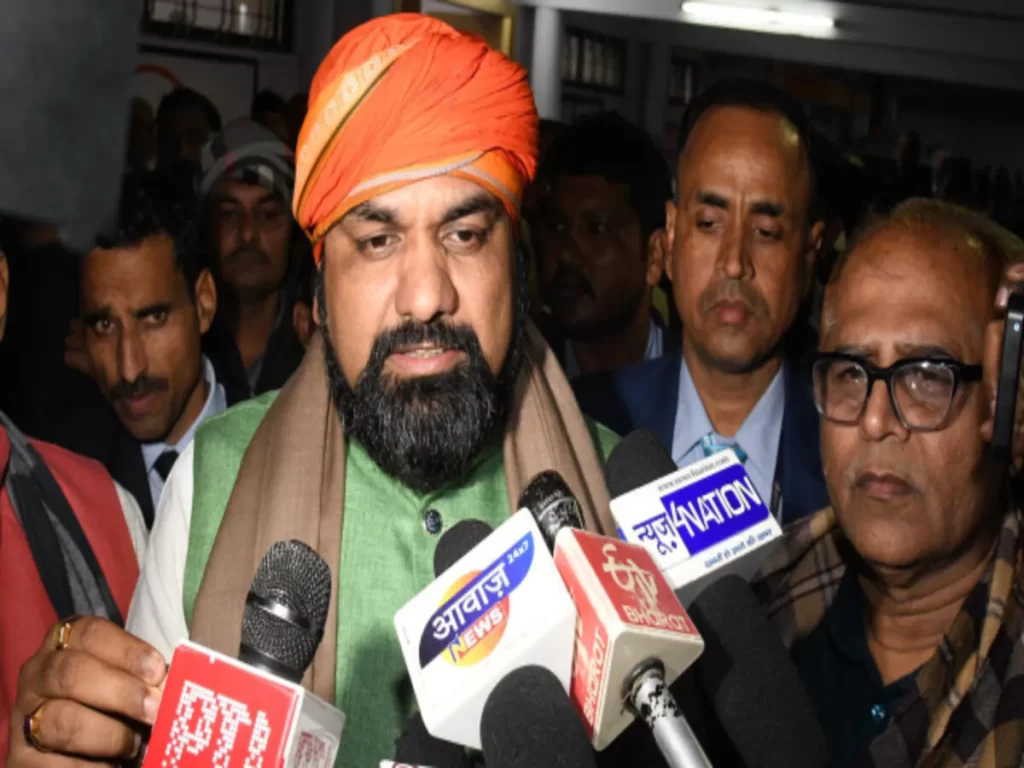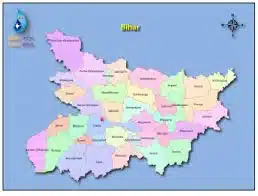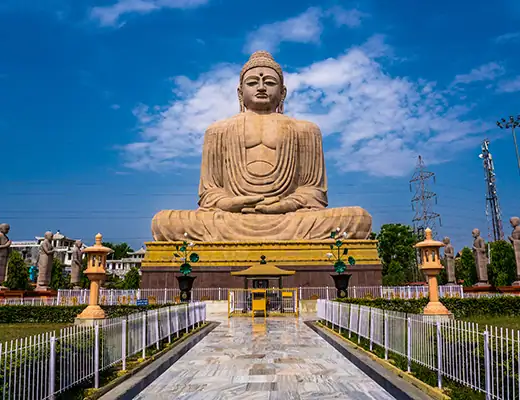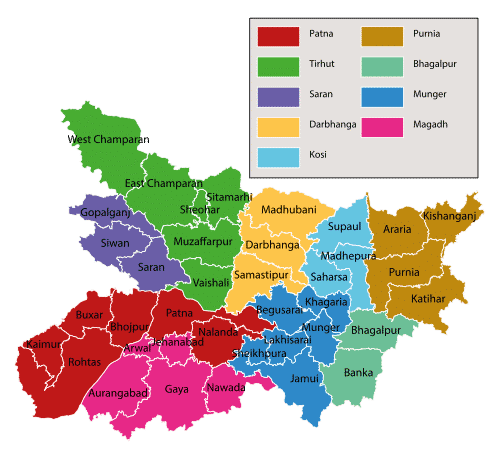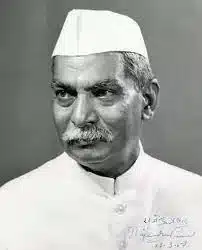List Of Important Folk Dances Of Bihar
Jat Jatin (Folk Dances of Bihar)
- Jat-Jatin is the most popular folk dance of North Bihar, especially in Mithila and Koshi region.
- It is performed by a pair of man and woman.
- Jat-Jatin is a folk dance of the same emigrant husband accompanied by his spouse.
- Apart from poverty and sorrow, this dance reflects a rainbow of the sweet and tender quarrel as well as some complaints between husband and wife.
- The folk mocks to comfort the hurdles of life with a smile.
- The headlines of the lyrics is “ Tikwa-jab-jab Maugailion re jatwa – Tikwa kahe na lawle re … ”
Karma (Folk Dances of Bihar)
- The traditional Karma Dance gets its name from the Karma tree which stands for fortune and good luck. The dance begins with the planting of the tree, followed by circular formations around it.
- In this group dance, there are usually as many men as women dancers.
- The dancers form a two-tiered formation and the movements are usually backward and forward, towards and away from each other.
- The dancers swing to the rhythm of the drum and the clapping of the women folk.
- Later, breaking the formation, the dancers thread in and out and the body movements involve bending of the torso and the knees.
- The dancers put their arms around the waists of their neighbours and form semicircular rows.
- Each row of dancers sings and dances alternately to the accompaniment of the Mandur and Timki.
- Drums beat fast and loud and the dance ends on a happy note.
- The choreography is imaginative and the themes of the songs are contemporary and relevant.
Kajari (Folk Dances of Bihar)
- Kajari is a song of rainy season.
- The popular melodious tune of Kajari songs produce a sweet sensation in body and it is heard from the very beginning of the Shravan month with the rhythmatic note of rain.
- The eves of village begin dancing like peacock with the song of “Bhijat awe Dhaniya Ho Rama …”.
Jhumar (Folk Dances of Bihar)
- Jhumar is a traditional folk dance of Bihar, which is performed by the rural women.
- There is no fixed season for this beautiful dance form, it is a dance, which is performed at all times.
- Spring descends on earth with its beauty and spreads joy and happiness all around.
Magahi Jhumar (Folk Dances of Bihar)
- The Magahi Jhumar dance is usually presented in the form of a duet, where male and female dancers play the role of husband and wife.
- They dance in unison, expressing their desires and aspirations.
- The wife asks her husband for good clothes and beautiful ornaments.
- The husband promises to give her everything she desires.
- This vibrant folk dance in performed to the accompaniment of melodious music.
Jharni (Folk Dances of Bihar)
- The Jharni Dance is a ritualistic dance performed by the Julaha community during Muharram.
- The dancers use bamboo sticks split at one end.
- They stand in a circular formation, and move around, each dancer striking the stick of his partner.
- The sound produced provides the beat for the dance.
Jhijhia (Folk Dances of Bihar)
- Jhijhiya is a cultural dance from the Mithila region of the Indian subcontinent.
- Jhijhiya is mostly performed at time of Dusshera, in dedication to Durga Bhairavi, the goddess of victory.
- While performing jhijhiya, women put lanterns made of clay on their head and they balance it while they dance.
- It is believed that when women perform this dance, negativity cannot touch them and their loved ones.
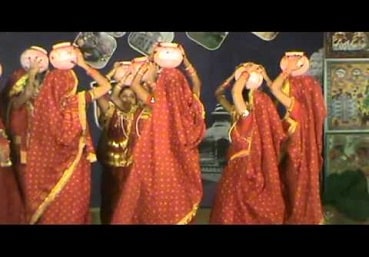
Jhumeri (Folk Dances of Bihar)
- Jhumeri is a folk dance from Mithilanchal.
- After the month of Ashwin comes Kartik with its clear skies. On the full moon night of Kartik the young maidens of the village sing and dance to celebrate the turn of the season.
- The words of the Jhumeri song Kartik maas na akashey badari and the graceful movements of the dance cast a spell on the audience.
Sohar Khelwana (Folk Dances of Bihar)
- Sohar Khelwana is a dance performed by women to celebrate the birth of a child.
- In India, the arrival of a newborn is celebrated with traditional rituals.
- The child receives blessings from family members, neighbours and well-wishers.
- Through the Sohar songs, the women compare the new born to Lord Rama and Lord Krishna, popular Hindu Gods who are the embodiments of virtue. The eunuchs are an integral part of the celebration of childbirth and take part in this dance.
Holi Dance/Dhamar Jogira (Folk Dances of Bihar)
- Spring arrives, resplendent in the colours of ‘abir’ as the magic of Holi sweeps across the land.
- Commemorative of the victory of good over evil, the Festival of Colours is celebrated with unabated enthusiasm by the young and old alike.
- Come Holi and the hues of the rainbow deck the air in fine mists, the streets in telltale smears and our hearts with the joyful hope that peace and happiness shall reign.
- The Holi dance is a vibrant dance form of Bihar. The accompanying songs are sung in the Dhamar style.
Krishi Nritya (Folk Dances of Bihar)
- The rains have quenched the earth’s thirst.
- The sight of their fields rich with the golden crop fills the farmers’ hearts with joy.
- They express their happiness through dances, which are rhythmic and enjoyable.
Chaita (Folk Dances of Bihar)
- Chaita songs, as the name suggests, are sung in the month of Chaitra, when flowers appear in the mustard plants. Men sing these romantic songs.
Nachni (Folk Dances of Bihar)
- The Nachni dances with her Rashik or male partner, to the singing and clapping of male accompanists.
- Nachni dances are presented at various festivals and special occasions.
- The Nachni is not only the dancer, but also the singer.
- The accompanying musical instruments include the Nagara, Shenai and Harmonium.
Natua (Folk Dances of Bihar)
- The Natua dance begins with an item called the Natua Kachal.
- In this duet performance, the accompanying musical instruments include the Nagara, Dhol and Shenai.
- The costumes worn by the dancers are indigenous and attractive.
Also refer :
- Folk Dances of India
- Folk Dances of Jharkhand
- Download the pdf of Important MCQs From the History Of Ancient India
- List Of Important Inscriptions In India

